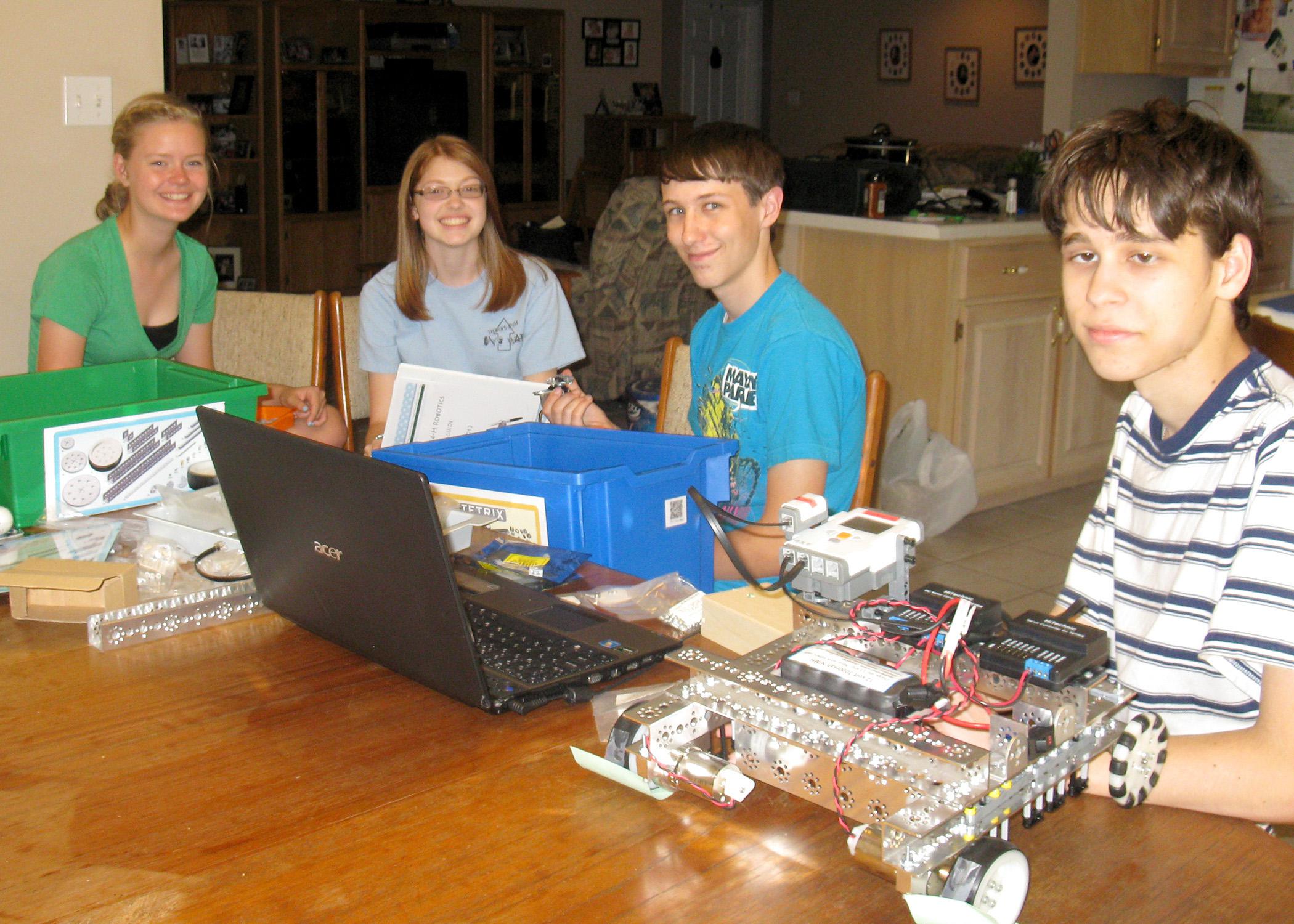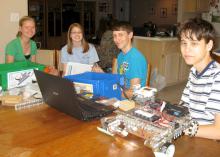Information Possibly Outdated
The information presented on this page was originally released on April 22, 2013. It may not be outdated, but please search our site for more current information. If you plan to quote or reference this information in a publication, please check with the Extension specialist or author before proceeding.
Robotics build bridge to tech topics in 4-H
MISSISSIPPI STATE – A Pearl River County family learned that 4-H robotics’ “no experience required” policy opened doors to new skills they never expected.
Jill Bordelon’s three children, Emily, Eric and Alex, became interested in robotics when 4-H first offered the activity in their county in 2009. Led by their mother, the children formed a team with interested 4-H’ers to construct a robot and compete against other robotics teams.
“None of us had done anything like this before,” Jill Bordelon said. “We got a kit and muddled through. We all learned at the same time.”
The 4-H robotics project requires more than simply constructing a robot. Team members have to design and program their robot to accomplish certain tasks within time and mechanical constraints. Then their robot competes without additional input or interference from its builders.
For example, in one competition, the robot had to push a button, collect pingpong balls, go to a firing line and use a catapault arm to fire pingpong balls at a target.
Bordelon said her inexperience was an advantage because she could not tell the team members what to do.
“They had to troubleshoot, figure out what was going on and depend on themselves, and they did,” she said.
Enthusiasm grew in the county as the senior and junior teams competed at Project Achievement Day and Club Congress -- and won.
“Our seniors won first place last year, and I was very proud of them because of the challenges they overcame,” Bordelon said. “At first, teams used the Lego Mindstorm robot at both junior and senior levels, then the seniors had to switch to a different program and learn a new system, and then they changed the robot. None of us knew what we were doing.”
At first the team members got frustrated.
“They took the time to figure out the new robot, and when it started working, it was so rewarding to see their pride,” Bordelon said.
As more 4-H’ers became interested in robotics, volunteer leaders Bordelon and Brynia Gilmore founded Megabots, a countywide science, engineering and technology club.
“We focus on robotics, but we also do a lot of science activities,” Bordelon said. “We build circuits, investigate buoyancy -- any kind of science-related activity that we can do, we do.”
The Megabots also work to give back to their community. Last year they sponsored a food drive for a local food pantry and collected items to send to military personnel during the holidays.
“The Megabots Club is a great example of the dedication of 4-H volunteers and their willingness to invest in 4-H youth,” said Mariah Smith, assistant Extension professor and robotics coordinator for Mississippi State University’s Extension Center for Technology Outreach. “In a very hands-on way, Jill and Brynia are helping these 4-H’ers chart a course for the future and explore new paths for lifelong learning.”
Smith said robotics builds a bridge to related topics.
“Research has shown that robotics can be an exciting gateway to engage youth in science, technology, engineering and math because it blends hands-on learning -- a key component of 4-H -- with fun activities and problems to solve,” Smith said.
Alex Bordelon, Jill’s 13-year-old son, said the best parts about being in Megabots are building the robot and meeting new people.
“I really had fun preparing with my team last year,” he said. “We all got along and even when our robot did not do what we wanted it to do, we never gave up trying.”
His advice to anyone who might want to join 4-H for robotics is to be persistent.
“Anyone can do it as long as they are willing to work hard and not give up,” he said.





